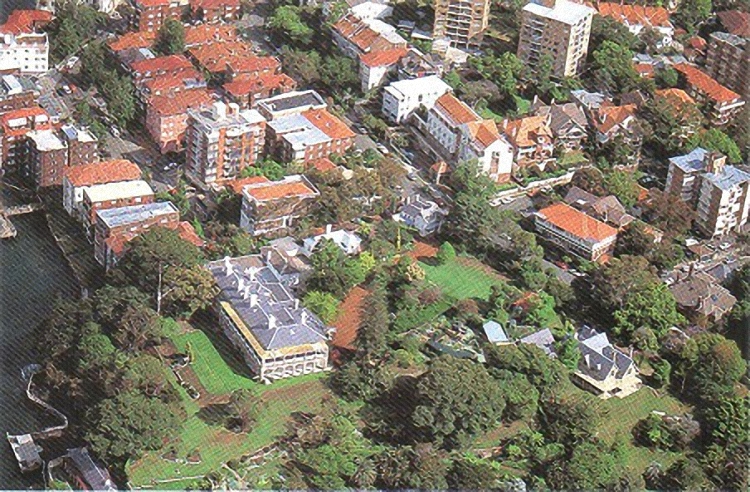The Westminster system of parliamentary democracy depends on the competition of different political parties to run for office in periodical elections to ensure that one party (or a coalition) has a cohesive parliamentary majority and can form a government.
Under this system these parties formulate public policies, select candidates for election and campaign for electoral victory. In Australia over the past one hundred years, the main division in Federal and State parliaments has been between the Australian Labor Party and Liberal-other conservative alliances, each side fighting to capture the middle ground occupied by most voters. Smaller parties rise and fall over the years, and independents may from time to time win a few seats in Parliament.

Australian Labor Party
The Australian Labor Party (ALP) is the country’s oldest political party with continuous representation in its parliaments. In 2000 it was the ruling party in New South Wales, Victoria, Queensland and Tasmania. It grew from, and is still linked, with the trade union movement. After long maritime and shearers’ strikes failed in 1890-91, union leaders turned to political action as an alternative means of improving conditions for workers. By 1901, Labor candidates had been elected to most colonial/State parliaments and to the first federal Parliament. The party adopted its present name in 1918.
For much of the twentieth century the ALP proclaimed socialist objectives, among them the nationalization of key industries. But the party has always been more pragmatic than ideological, more nationalist than internationalist, and more intent on sharing the benefits of the capitalist system than on overthrowing it. Now the ALP also favours Australia becoming a republic.
These days, the Labor Party is essentially a social democratic party and, with trade union membership declining, has to win significant middle-class support to govern. It has long abandoned its original insistence on a ‘White Australia’ policy in favour of a more egalitarian, humanitarian and anti-racist stance.
The Commonwealth governments led by Gough Whitlam (1972-75), Bob Hawke (1983-91) and especially Paul Keating ( L 991-96) radically modified many of Labor’s traditional collectivist principles to make the Australian economy more productive, competitive and resilient in the international marketplace, to win business confidence and to convince voters of their party’s economic competence.
Labor administrations have gone further along the paths of free trade, fiscal rectitude, financial deregulation, and even that of privatisation of government enterprises than would have seemed imaginable 30 years ago. At the same time, the party believes in a fairer distribution of incomes and wealth through tax policies, social security and community services, stronger environmental protection and better opportunities for the vulnerable and disadvantaged. The present leader, Kim Beazley, is unlikely to turn back the clock.
Both in national structure and its parliamentary memberships, the ALP has demanded greater loyalty and enforced stronger discipline than its more loosely organised opponents. But it is also more sharply divided into factions and sub-factions, which struggle for policy dominance, parliamentary preselection and executive positions. The factions range from the often militant Socialist Left to the more pragmatic Irish-Catholic Right, spanning both the party’s trade union affiliates and its local branch members.
In 1954 a deep, bitter and long-lasting schism developed over allegations by the federal Labor leader, Dr H. V. Evatt, that a secretive, Catholic-inspired movement, formed to fight the Communist dominance of some trade unions, was trying to take control of the ALP Many Labor members quit to form the new right-wing Democratic labor Party which split the labor vote and effectively kept the mainstream ALP our of office in Canberra and some States for nearly two decades.
Liberal Party
The present-day Liberal Party was formed in 1945 by Robert Gordon Menzies from the main non-Labor parties that evolved from informal political groupings in the earlier colonial parliaments. Menzies, who led the Liberals to power in Canberra in 1949, was one of Australia’s most influential political leaders. An Anglophile and ardent monarchist, Menzies envisaged the Liberal Party as a bastion of free enterprise, personal opportunity and balanced federalism against what he portrayed as the restrictive, coercive forces of socialism and bureaucratic centralism.
In practice, he and his successors proved to be more flexible and opportunistic than their official platform and the pre-1972 Labor Party. In the structure of its organisation, the Liberal Party is federal rather than national, exerts less control over its parliamentary members, and accords its leaders (while successful) more authority. Unlike Labor, it has no formal factions, but there have long been divisions between the party’s ‘small-I liberal’, socially permissive, consensus-seeking and welfare-oriented elements (sometimes called the ‘wers’) and the now more dominant social conservatives and hardline economic rationalists (known as the ‘drys’).
The present Federal Coalition Government led by the Liberal prime minister. John Howard, since 1996 faces another election in 2001. His administration has pursued a radical program of tax reform and economic restructuring, has introduced rigorous industrial relations and social security regimes. Mr Howard is a strong advocate of ‘family values’, an opponent of the republican movement (which many of his colleagues support) and has provoked much controversy over his seemingly uncompromising attitudes to more liberal immigration, Aboriginal reconciliation and some United Nations committees.
National Party
Its former name, the Australian Country Party, is a truer indication of the National Party’s regional base and rural focus. It grew rapidly in membership and influence in the early 1920s, drawing support from farmers’ associations who were dissatisfied with wartime marketing schemes for primary products.

The National Party is strongest in Queensland, where it is the leading non-Labor parry in the State Parliament, and parts of New South Wales. Federally, it has been a junior coalition partner in every non-Labor government since 1940. Socially conservative and staunchly pro-monarchist, the party is primarily concerned with the interests of farmers and those in rural towns in issues ranging from trade access, commodity prices and marketing arrangements to better delivery of government services. Telecommunications has recently become a major issue.
At times the National Party has formed strategic alliances with city-based manufacturers (offering support for tariff protection in return for farm subsidies) and multinational mining corporations. Its need co influence public policy on behalf of its rural constituents and yet to collaborate with the more broadly based, urban-oriented Liberals has often led to internal and mutual tensions-such as the issue of gun control-and to occasional schisms in some States.
Minor political parties
While many special-interest groups, independents and splinter parties contest elections, in recent years only three minor parties have managed to achieve parliamentary representation in Canberra and/or more than one State.
Australian Democtrats
The Democrats, formed in 1975 as a middle-of-the-road ‘third force’ under the leadership of a former Liberal minister, has been the most influential of the minor groups. Drawing on popular disenchantment with the major panics by promising to ‘keep the bastards honest’, it has at times (as at present) held the balance of power in the Senate. It has used this position to frustrate or force modifications of aspects of many aspects of the Howard Liberal government’s tax, industrial relations, social security, privatisation and environmental policies.
Greens
The Greens have significant support in Tasmania, and have several state MPs and one senator, They have also won some support in Western Australia by their opposition to logging and seeking greater protection of heritage wilderness areas.
One Nation
Founded by a small-town businesswoman, Pauline Hanson, this party achieved international notoriety in the past few years with its raciest anti-immigration rhetoric, naive economic prescriptions and strident opposition to Aboriginal land rights. Internal squabbling, culminating in a split, electoral deregistration and litigation eclipsed its limited initial electoral success, but in 2001 it experienced a resurgence of support in two State elections.
The Electoral System
Compulsory electoral enrolment and voting, first introduced in 1915, is one distinctive feature of Australian elections. All adult citizens (aged 18 and over) in Australia are not only entitled to vote in elections for federal and Scare parliaments but are required by law to do so. All elections, including those for local government, are by secret ballot and are conducted with scrupulous honesty by an independent electoral commission.
Preferential voting, daring from 1918, is another distinguishing feature of the Australian elections, and is used for the House of Representatives and most State assemblies. Under this system, voters must mark ballot papers with consecutive numbers in order of their preference (or as advised by their preferred party). If one candidate does not win an outright majority, the one polling the least votes is eliminated and the voters’ second preferences are distributed, and so on, until one candidate wins a majority. Minor parties, by advising supporters how to allocate their preferences, can often determine which of the major parties will win particular seats or even gain office.
Forms of proportional representation, with each State as a single, multi-member electorate, are used in elections for the Senate and the Legislative Councils (upper houses) of New South Wales and South Australia. Tasmania uses proportional representation, based on five seven-member electorates, for its House of Assembly. To simplify voting for the Senate, electors may now mark a single block vote for their preferred party or grouping, rather than having to fill in numbers for 50 to 70 or more individual candidates.
All elections make provision for the casting of both absentee and postal votes by those unable to attend their local polling booth. Since 1984, the Commonwealth Electoral Commission has allocated public funding to political parties for their election campaigns, and has required certain disclosures of other campaign contributions.
Voting for local councils, once restricted to property owners, is open to all adult residents and in some States is compulsory. The lord mayors of Sydney and Brisbane are directly elected by voters, while most other mayors and shire presidents are elected by their councils. The Labor Party endorses candidates in some urban areas, but most aspiring councillors are either independents or supported by local business or residential interest groups.
Public administration and local government
Australia has followed, federally and in each Stare, the British model of a non-political, permanent public service that continues the task of impartial policy advice and administration regardless of changes of government. However, this system is no longer as clear-cut as it was. Incoming governments now often appoint new heads of departments and other senior executives, mostly from outside the service and on fixed contracts, whom they regard as more in tune with their programs. Ministers now also have their own expert and political advisers. who may be more influential than their departmental officers.
Much of the work of government, which in other countries is left to government departments or private enterprise, has traditionally been undertaken in Australia by semi-autonomous statutory corporations, commissions and authorities. Some of those established to provide essential services such as savings banks, public transport, and gas and electricity, have been privatised in recent years, in the ostensible interests of efficiency. competition and debt-reduction. There are still some powerful regulatory authorities, however, like the Australian Competition and Consumer Commission.
A uniquely structured and independent federal statutory authority is ATSlC, the Aboriginal and Torres Strait Islander Commission. Its 18 members arc delegates from 35 directly elected regional councils. It advises governments on indigenous affairs, advocates indigenous interests in national and international forums, and administers programs relating to land rights, community support and welfare. However, its position is now under review.
Local government in Australia dates from the colonial era, when settled areas were divided into rural shires and urban centres classed as cities, towns or boroughs. Although often called the third tier of government, local government is subject to Scare or Territory law and supervision. Its scope of mandatory and optional responsibilities is more limited than in many other countries, such services as police, schools, hospitals, main roads and public transport being state-run operations.
Local councils are generally responsible for the maintenance of local roads, street lighting and cleaning, garbage disposal, traffic control and parking, planning and building permits, local parks and gardens, recreational and cultural activities and local community and health services. Local councils derive most of their revenue from rates based on property values and from government grants.




